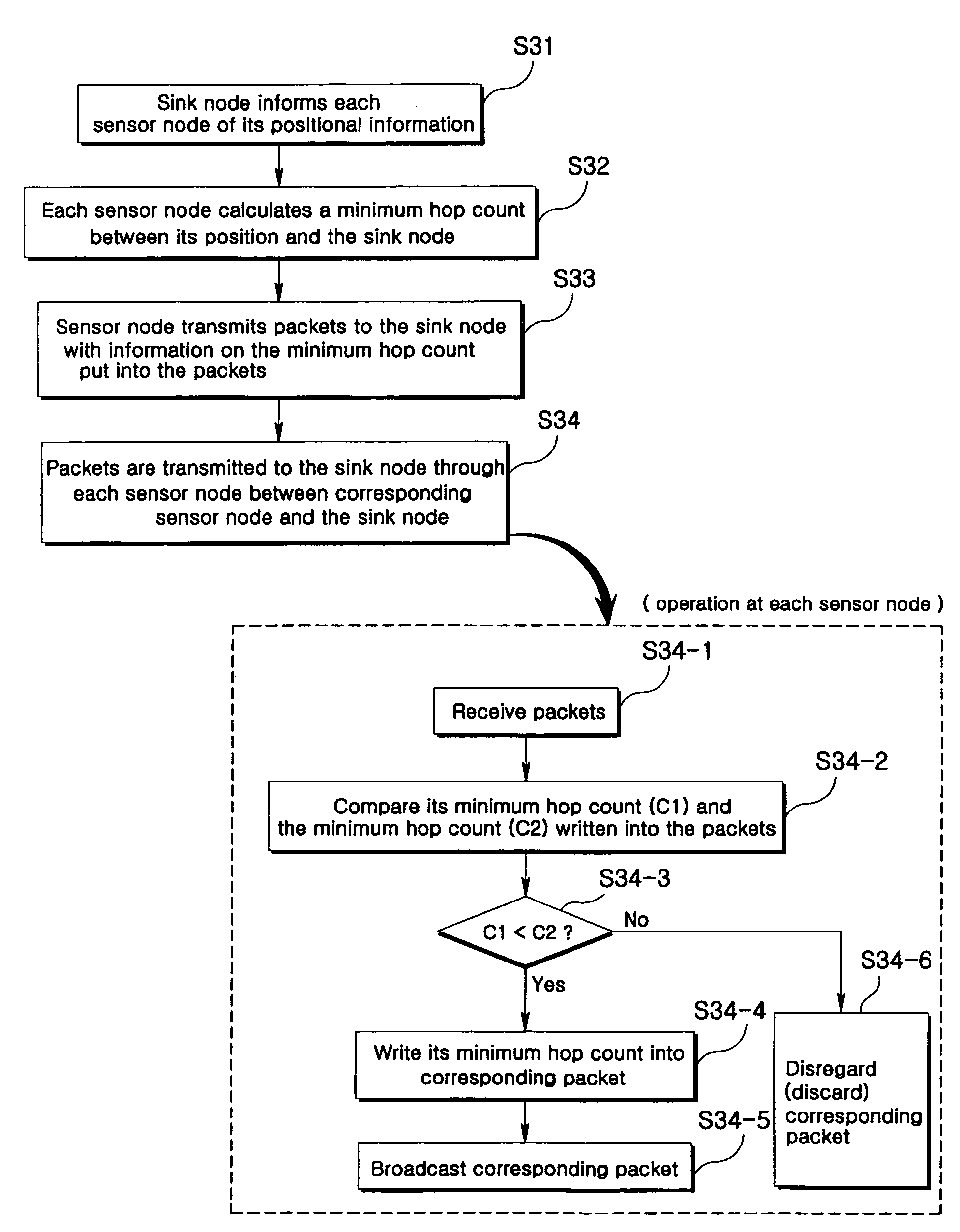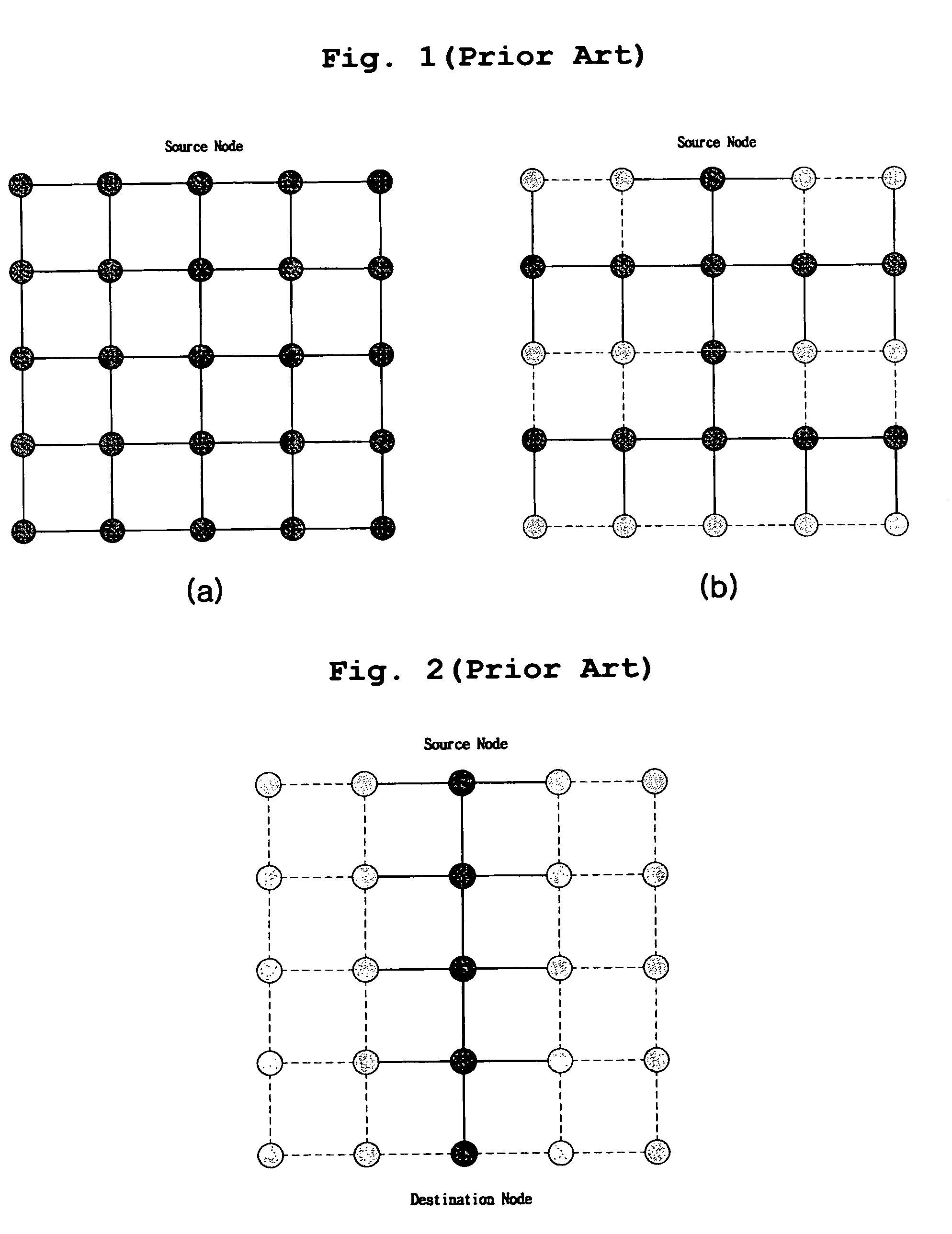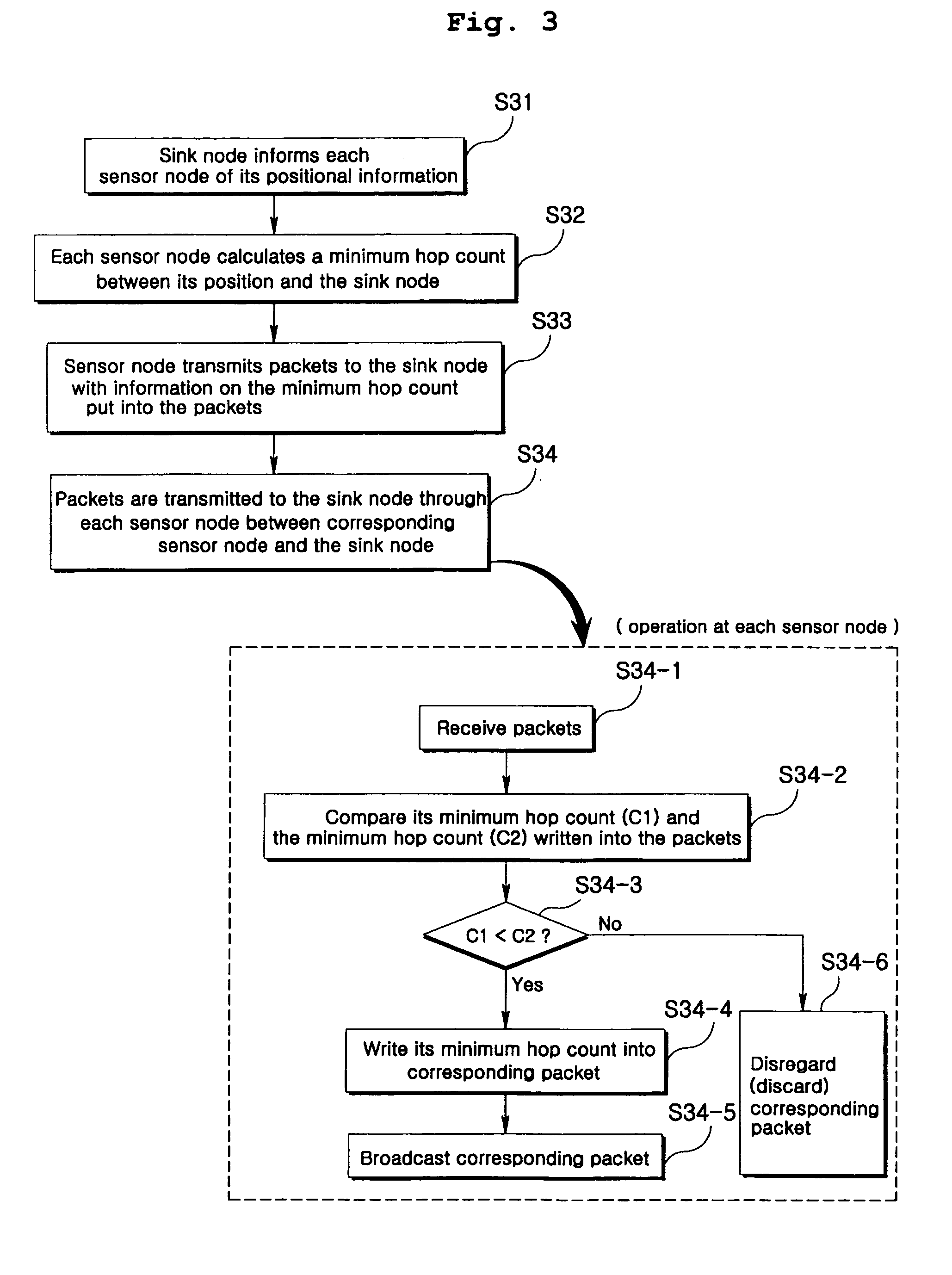Directional flooding method in wireless sensor network
a wireless sensor and wireless sensor technology, applied in data switching networks, frequency-division multiplexes, instruments, etc., can solve the problems of network falling into a severe contention state, nodes with very limited energy and computing resources, and high cost, so as to reduce the whole energy consumption and avoid unnecessary packet transmission
- Summary
- Abstract
- Description
- Claims
- Application Information
AI Technical Summary
Benefits of technology
Problems solved by technology
Method used
Image
Examples
Embodiment Construction
[0042]The present invention will now be described in detail in connection with preferred embodiments with reference to the accompanying drawings.
[0043]An embodiment that a packet is transmitted from given sensor nodes to a sink node will be explained with reference to FIG. 3.
[0044]In a flooding method according to the present invention, each of sensor nodes determines whether to flood based on directional information toward a destination node. To this end, it is required that each sensor node be constructed to know its position. For example, the sensor node may use positional information through a GPS receiver.
[0045]A sink node initially informs the respective sensor nodes of its positional information (S31).
[0046]It is assumed that the sink node is rarely moved. Thus, what the sink node informs each sensor node of its positional information can be performed only once when a wireless sensor network is initially formed. Each of the sensor nodes that received the positional informatio...
PUM
 Login to View More
Login to View More Abstract
Description
Claims
Application Information
 Login to View More
Login to View More - R&D
- Intellectual Property
- Life Sciences
- Materials
- Tech Scout
- Unparalleled Data Quality
- Higher Quality Content
- 60% Fewer Hallucinations
Browse by: Latest US Patents, China's latest patents, Technical Efficacy Thesaurus, Application Domain, Technology Topic, Popular Technical Reports.
© 2025 PatSnap. All rights reserved.Legal|Privacy policy|Modern Slavery Act Transparency Statement|Sitemap|About US| Contact US: help@patsnap.com



